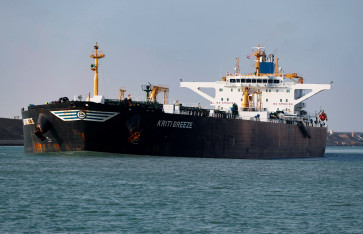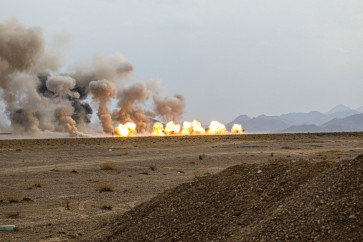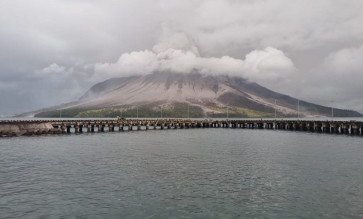Profit, connectivity and people’s right to fly
VVIP passengers: The presidential aircraft, which carried President Joko “Jokowi” Widodo, is parked at the Kertajati International Airport in Majalengka, West Java, on May 24, 2018
Change Size

V
VIP passengers: The presidential aircraft, which carried President Joko “Jokowi” Widodo, is parked at the Kertajati International Airport in Majalengka, West Java, on May 24, 2018. The presidential aircraft landing marked the official opening of the airport, which is expected to reduce the burden on the overcrowded Husein Sastranegara Airport in Bandung.(Tribun Jabar/Gani Kurniawan)
The rapid increase in the number of air passengers in the past few years has demanded a substantial increase in air transportation infrastructure such as airports, particularly those serving domestic routes and destinations. In response, the government has been ambitiously developing 15 new airports under the 2015-2019 national medium-term development program (RPJMN) and is planning to develop 12 more in the 2020-2024 RPJMN. The Jakarta Post’s Riza Roidila Mufti, Fachrul Sidiq and Imanuddin Razak take a close look at the issue.
With Indonesia being the world’s fourth most-populous country, coupled with the growth of the middle class, boom of low-cost carriers in the recent decade and overall economic growth, many domestic travelers are shifting from slower means of land and sea transportation services to faster and more comfortable air travel. Statistics Indonesia (BPS) has recorded a steady growth of domestic air travelers, from 71.63 million passengers departing on domestic flights and 73.89 million passengers arriving on domestic flights in 2014; to 72.56 million and 75.59 million passengers, respectively, in 2015; to 83.35 million and 87.21 million passengers in 2016; and to 90.74 million and 95.40 million passengers in 2017.
Indonesia is widely regarded as an emerging global market for air travel. The country is ranked as having the second-fastest growing aviation industry in the world after China in terms of aircraft order and business value. The International Air Transport Association (IATA) has predicted that Indonesia will become the world’s fourth-largest air travel market within the next decade, climbing from the world’s 10th largest aviation market in 2017 to the fourth position by 2030.
Efforts to develop and increase the number of airports following the rapid growth of air passengers, particularly domestic ones, were started by previous governments and are being continued by the current government with a focus on ensuring connectivity to and from all parts of the country.
“For an archipelagic country like Indonesia, air transportation has become a necessity. The need for more air infrastructure is in line with President Joko “Jokowi” Widodo’s Nawa Cita [election campaign promises] to establish connectivity until up to the outer and border regions,” Transportation Minister Budi Karya Sumadi told The Jakarta Post in a recent exclusive interview.
Miangas Island, an Indonesian outer island bordering with the Philippines, which is part of the Talaud Islands regency, North Sulawesi, and Rote Island in East Nusa Tenggara province, which has a sea border with Australia, are among the regions where the 15 airports are to be completed under the ongoing 2015-2019 RPJMN.
Meanwhile, Yahukimo, Nabire and Keerom regencies in Papua province and Fakfak regency in West Papua province are among the 12 regions where airports are to be developed under the 2020-2024 RPJMN.
The development of new airports in Indonesia is handled by both the Transportation Ministry and two state-owned airport operators, Angkasa Pura (AP) I and AP II. While airport development under the Transportation Ministry is focused more on opening connectivity in areas with difficult entry access, AP I and AP II are to develop new airports to solve the lack of capacity in one region and overcapacity in another region or at existing airports.
AP II president director Muhammad Awaluddin said his company was moving full steam ahead to complete a number of airport development projects in anticipation of high demand for air transportation.
“We used to be in more of a waiting mode [when it came to airports] and because of this, infrastructure development lagged behind the growth of demand. Now, our concept is to push and lead the supply in infrastructure,” Awaluddin told the Post on Friday.
AP II, which is currently operating 16 airports mostly in the western part of Indonesia, has several airport development projects in 2019. The firm is currently expanding the terminal of Depati Amir Airport in Pangkal Pinang, Riau Islands, and building a new terminal at the Minangkabau International Airport in West Sumatra. It is also in the process of increasing the capacity of the Soekarno-Hatta International Airport in Banten by expanding its third runway, building an east cross taxiway, as well as finishing a parking lot in Terminal 3.
At the same time, the firm is now developing the Jenderal Soedirman Airport in Wirasaba, Purbalingga, Central Java. Currently serving as a military airbase, the airport is being developed to also serve civil aviation.

In the near future, AP II is eyeing to develop the capacity of three more airports, namely Fatmawati Soekarno in Bengkulu, the H.A.S Hanandjoeddin Airport in Bangka Belitung and the Radin Inten II in Lampung.
Meanwhile, AP I, which operates 13 airports in the eastern part of Indonesia, is now focusing on increasing the capacity of airports in the Yogyakarta-Semarang-Surakarta (Joglosemar) triangle to solve the lack of capacity in the area.
The firm has finished development on a new terminal in the Ahmad Yani International Airport in Semarang, Central Java, which increased the airport’s capacity from only 800,000 passengers to 6 million passengers a year. It is now in the process of increasing the capacity of the Adi Soemarmo Airport in Surakarta, Central Java, from 1.5 million to 3 million passengers a year.
AP I is also completing construction of the Yogyakarta International Airport (YIA) in Kulon Progo, which is expected to be in full operation by the end of the year.
“The Yogyakarta International Airport is expected to solve the capacity problem of the Adisutjipto International Airport, which is now at a bursting point. With its maximum annual capacity of 1.8 million passengers, Adisutjipto airport had to serve 8.4 million passengers in 2018, an increase from 7.8 million passengers in 2017 and 7.2 million in 2016,” AP I president director Faik Fahmi told the Post recently.
With its large capacity and 3,250-meter by 60-m runway, YIA can accommodate big aircraft such as the Boeing 777 and Airbus A380. Its 219,000-square-meter terminal can also accommodate up to 14 million passengers a year.
The government’s commitment to providing connectivity for people to travel across the country has won both praise and criticism from observers.
“It is good that people can start to enjoy the ease of travel within the country. But development of new airports should also spread to regions outside of Java,” Transportation observer Djoko Setijowarno told the Post on Friday.
Budi said the development of new airports required massive investments that the government could not always provide.
“Therefore, we have asked businesses in the private sectors to participate in new airport development,” Budi said, citing the planned development of the Kediri Airport in East Java and Singkawang Airport in West Kalimantan.
The development of new airports by private firms will be carried out under a build-operate-transfer (BOT) system, in which they will be given a long-term management concession — 30 years as one possible option — before ownership is handed back to the government.
However, the development of new airports does not always provide an immediate positive impact on the airports’ utility rates. The Kertajati International Airport in Majalengka, West Java, is one example. Over a year since its inauguration in May 2018, the government is still struggling to bring in more people to use the airport, which is meant to share the burden of the overcrowded Husein Sastranegara Airport in Bandung, also in West Java.
Djoko said political interest, rather than feasibility studies, had often played a bigger role in deciding the location for new airports, including the Kertajati airport.
“Initially, Karawang was decided as the site for the new airport, but Kertajati was the eventual choice,” Djoko told the Post on Friday.
Awaluddin said efforts to immediately solve the problem of minimum air traffic in Kertajati would focus on attracting passengers to use the airport, which was inaugurated in May last year, by offering free shuttle bus services.
“Free shuttle buses will be provided until the 61.7-kilometer Cisumdawu toll road that connects several West Java towns, including Cileunyi, Sumedang and Dawuan, is completed,” the AP II president director told the Post on Friday.
“We also provide airline shuttle services in the morning and the afternoon.”
Air transportation observer Arista Atmadjati expressed concerns over the availability of qualified manpower to perform operational airport tasks.
“Serious attention should be paid to the quality of manpower that will perform the day-to-day operations of the airport, particularly at new and remote airports,” Arista separately told the Post on Friday.
Yohanes Sirait, a spokesman for AirNav Indonesia, the sole air navigation service provider in Indonesia, said air navigation services were available along with the completion of an airport.
“Air navigation procedures, equipment and manpower will always be available along with the establishment of a new airport. Otherwise, the airport is not yet ready for operation,” Yohanes recently told the Post.









